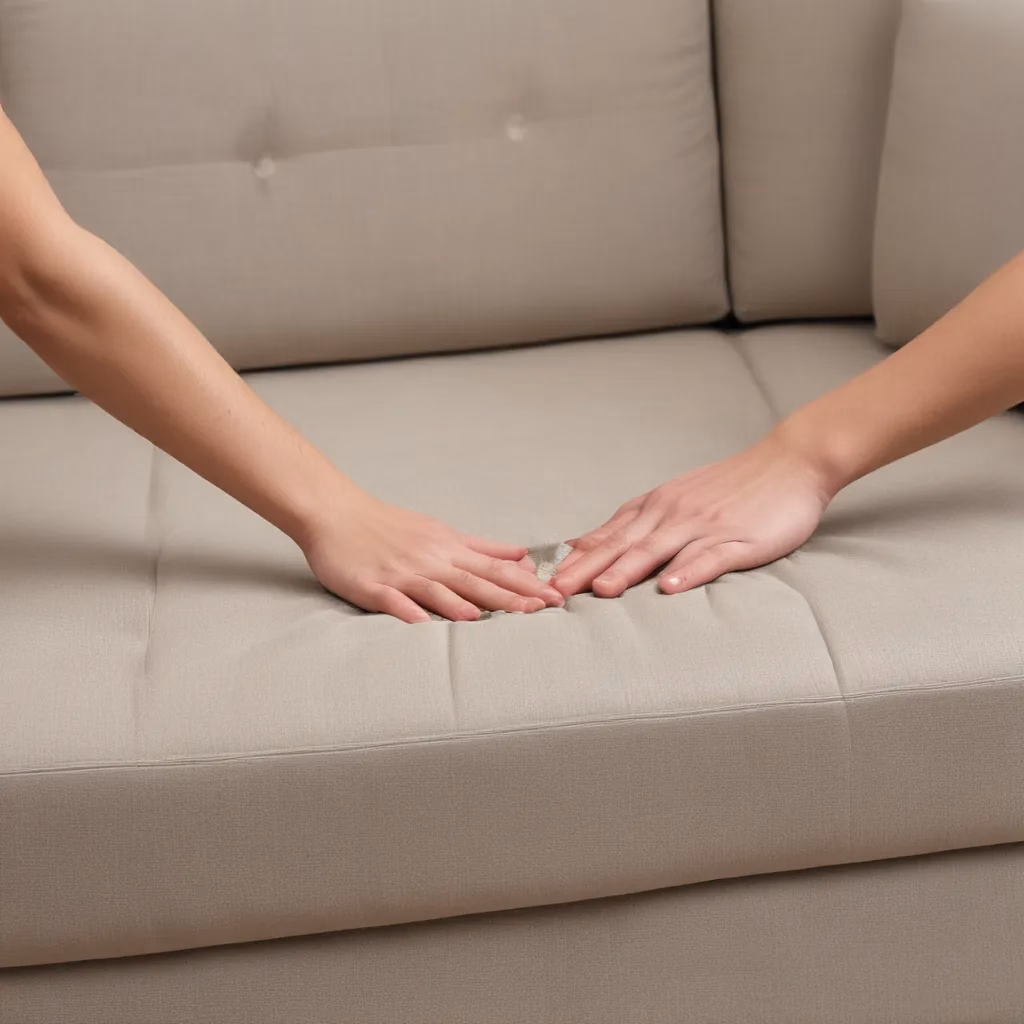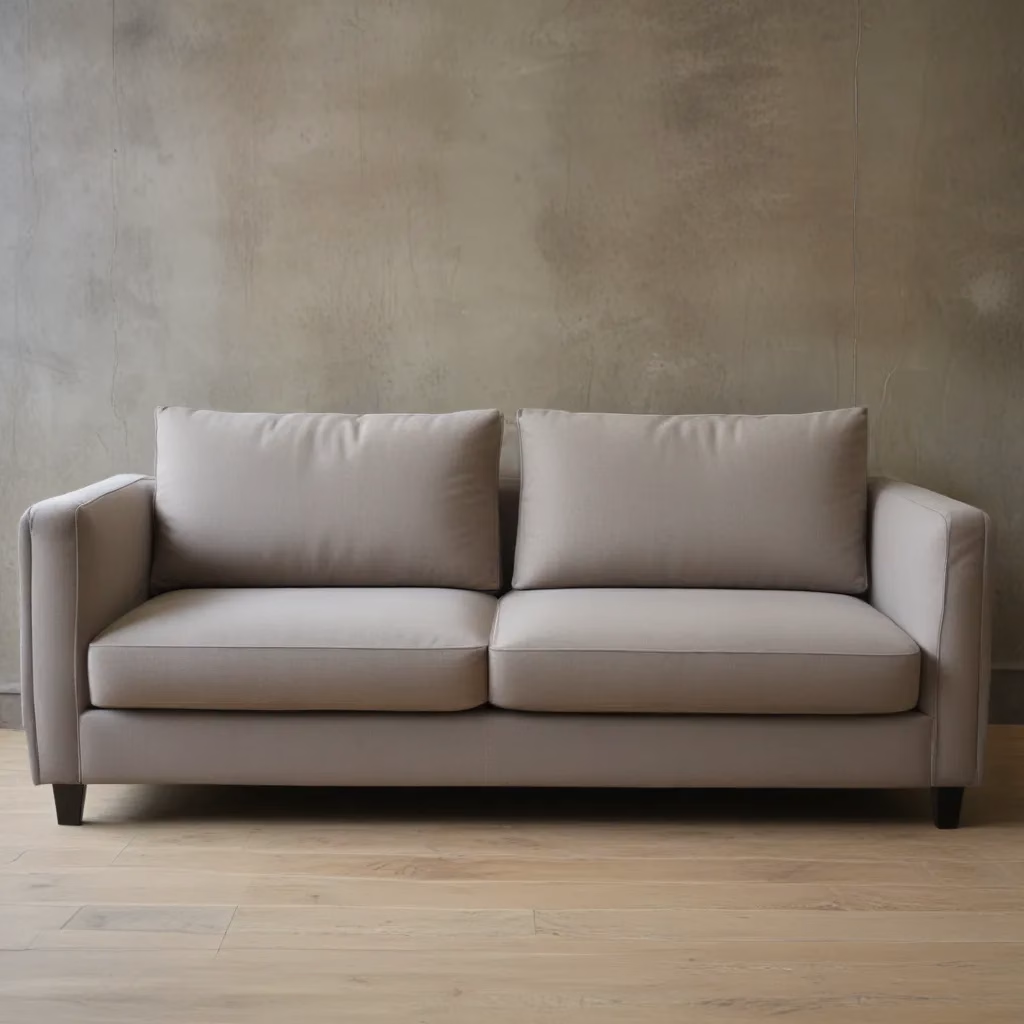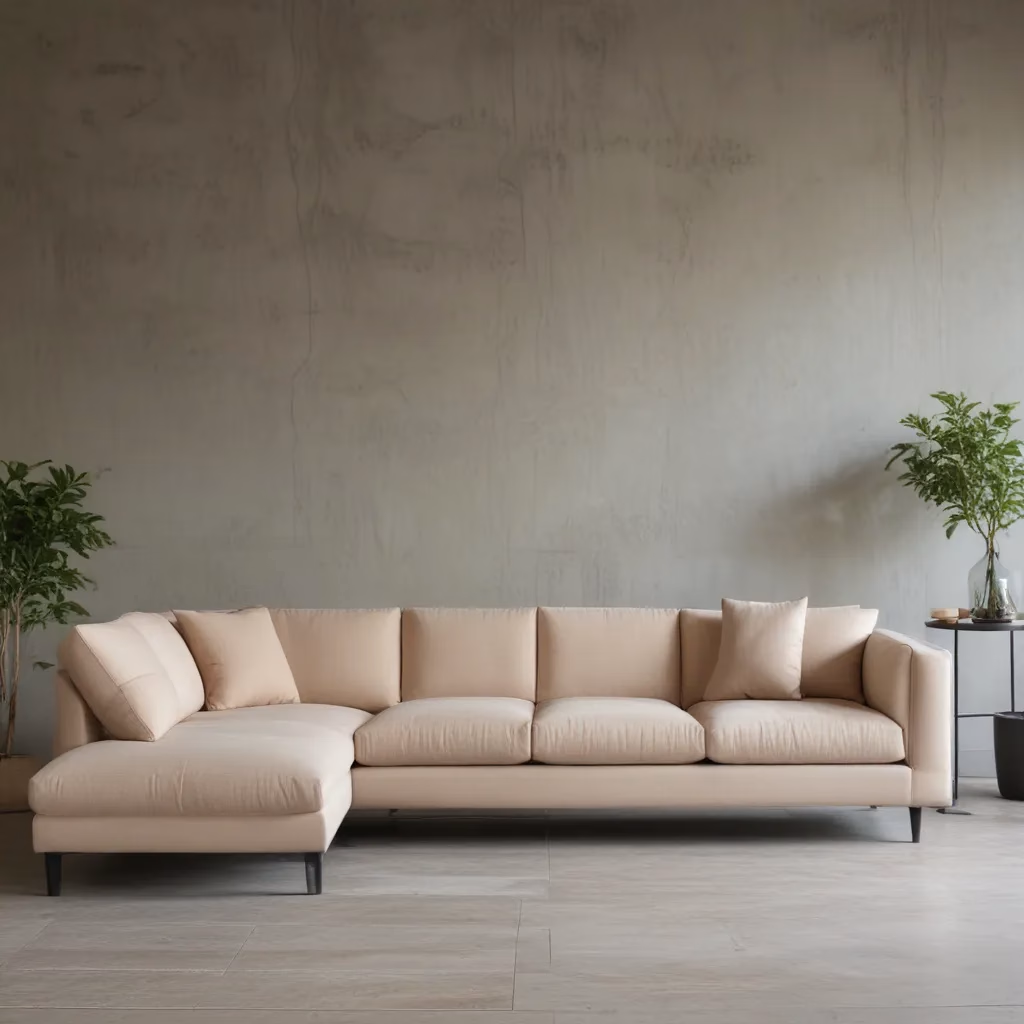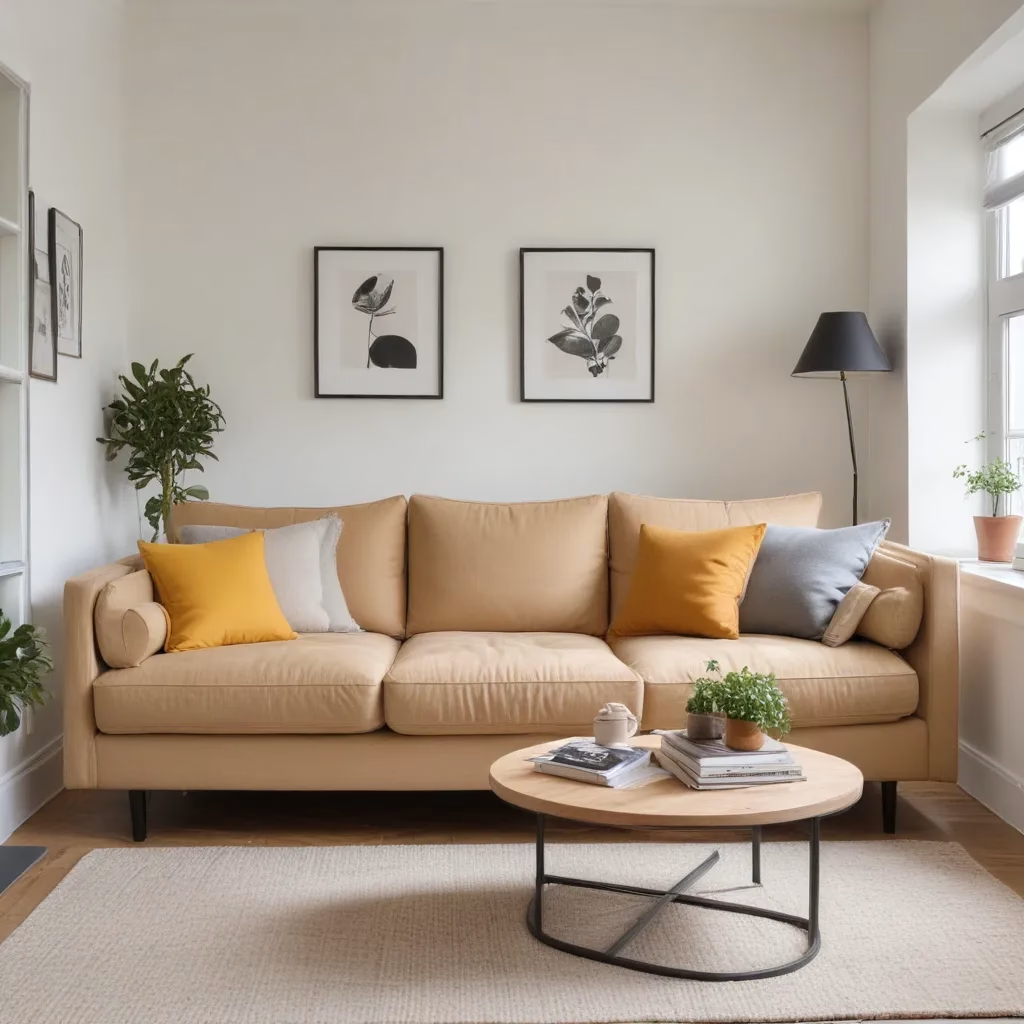
As an experienced furniture consultant and interior design writer, I’ve encountered a wide range of upholstery-related challenges that homeowners and renters often face. From mold and moisture problems to pet stains and worn fabric, keeping your sofas, chairs, and other living room furnishings in pristine condition can feel like a never-ending battle.
Now, this might seem counterintuitive…
In this comprehensive guide, I’ll walk you through some of the most common upholstery repair and cleaning issues, providing practical troubleshooting tips and DIY solutions to help you restore your furniture to its former glory. Whether you’re dealing with a stubborn stain, curious cats, or outdated textiles, this article will equip you with the knowledge and confidence to tackle any upholstery conundrum.
Identifying and Addressing Mold and Moisture Issues
Mold and moisture are the bane of any upholstered furniture owner’s existence. Not only can these culprits compromise the structural integrity of your pieces, but they can also pose serious health risks if left unchecked.
According to the EPA, mold thrives in damp environments and can produce allergens, irritants, and even potentially toxic substances.¹ If you suspect mold or moisture problems in your home, it’s crucial to act quickly to prevent the issue from escalating.
Start by carefully inspecting your furniture, paying close attention to areas that are often prone to dampness, such as the underside of cushions, the back of the sofa, and any crevices or cracks. Look for visible signs of mold growth, discoloration, or musty odors. If you spot any problematic areas, it’s time to take action.
DIY Mold Removal and Moisture Control
For small-scale mold outbreaks (roughly 10 square feet or less), you may be able to handle the cleanup yourself, following these guidelines:
- Use a mild detergent or specialty mold-killing solution to scrub the affected areas. Avoid using harsh chemicals like bleach, as these can release toxic fumes.
- Thoroughly dry the cleaned surfaces with towels or a fan to prevent the mold from returning.
- To address the root cause of the moisture, improve ventilation in the room, fix any leaks, and consider using a dehumidifier to maintain optimal humidity levels.
If the mold problem is more extensive or if you suspect hidden mold growth within the furniture, it’s best to consult a professional upholstery cleaning service or a mold remediation specialist. They will have the expertise and equipment to properly identify and eliminate the issue without putting your health at risk.
Remember, even after the mold has been removed, the affected upholstery may still bear stains or discoloration. In these cases, you may need to have the fabric professionally cleaned or consider reupholstering the piece entirely.
Tackling Tricky Stains and Spills
Spills and stains are an inevitable part of life, especially when it comes to sofas and other high-traffic living room furniture. Whether it’s a red wine mishap or a stubborn pet accident, prompt action is key to preventing the stain from setting in and becoming a permanent blemish.
Spot Cleaning Techniques
When dealing with a fresh spill, the first step is to blot the affected area with a clean, absorbent cloth or paper towels. Avoid rubbing the stain, as this can push the liquid deeper into the fabric.
For water-based stains like coffee or juice, you can try gently sponging the area with a mild detergent solution or a specialized upholstery cleaner. Avoid using hot water, as this can set the stain. Blot the area dry and repeat the process as needed until the stain is removed.
For oil-based or protein-based stains, such as grease, ink, or pet accidents, you may need to use a slightly more aggressive approach. Start by sprinkling some baking soda or cornstarch on the stain to help absorb the excess liquid. Let it sit for a few minutes, then gently brush it away. Follow up with a small amount of enzyme-based cleaner or a solution of warm water and mild dish soap, being careful not to over-saturate the fabric.
If the stain persists, you can try using a clean, white cloth dampened with a small amount of rubbing alcohol or hydrogen peroxide. Test this solution on an inconspicuous area first to double-check that it doesn’t damage or discolor the upholstery.
Professional Cleaning for Stubborn Stains
For deeply set-in stains or situations where DIY efforts have failed, it’s best to enlist the help of a professional upholstery cleaning service. They will have access to specialized equipment, solvents, and techniques that can often remove even the most stubborn blemishes without causing further damage to the fabric.
When selecting a professional cleaner, be sure to ask about their experience, the products they use, and any warranties or guarantees they provide. A reputable company will be transparent about their process and will work diligently to restore your furniture to its former condition.
Addressing Pet-Related Upholstery Issues
Ah, the joys of pet ownership – the unconditional love, the endless entertainment, and the occasional upholstery disaster. If you’re a proud pet parent, you’re no stranger to the challenges of keeping your furry friends from wreaking havoc on your living room furniture.
Preventing and Removing Pet Stains
One of the most common pet-related upholstery problems is, of course, the dreaded urine stain. When a cat or dog has an accident on your sofa or chair, it’s crucial to act quickly to soak up the liquid and prevent it from seeping into the fabric and padding.
Start by blotting the affected area with a clean, absorbent cloth or paper towels. Once you’ve removed as much of the liquid as possible, use an enzymatic cleaner specifically formulated for pet stains. These cleaners work by breaking down the organic compounds in the urine, helping to eliminate odors and prevent the stain from reappearing.
If the stain has had time to set in, you may need to use a more heavy-duty cleaning solution or even consider professional steam cleaning to fully remove the blemish and any lingering odors.
Discouraging Scratching and Other Destructive Behaviors
Cats, in particular, are notorious for using upholstered furniture as their personal scratching posts, leaving behind unsightly shredded fabric and exposed padding. To discourage this behavior, consider investing in sturdy, cat-friendly scratching posts or pads and strategically placing them around the room. You can also try spraying your furniture with a pet-safe deterrent spray or covering vulnerable areas with protective coverings, such as slipcovers or throw blankets.
If your pet’s destructive tendencies persist, you may need to explore behavior modification techniques or consult a professional animal behaviorist for guidance.
Rejuvenating Worn and Dated Upholstery
Over time, even the most well-cared-for upholstered furniture can start to show signs of wear and tear. Faded fabrics, sagging cushions, and fraying seams can all detract from the overall aesthetic of your living room, making your once-stylish sofa or armchair feel outdated and tired.
Refreshing Fabrics and Finishes
If your upholstery is starting to look a little lackluster, consider giving it a facelift with a new slipcover or throw. Slipcovers are an easy and affordable way to transform the look of your furniture without the hassle and expense of reupholstering the entire piece.
Alternatively, you can explore more permanent fabric updates, such as reupholstering the sofa or chair in a fresh, on-trend textile. When selecting new upholstery, be mindful of factors like durability, stain resistance, and ease of cleaning to double-check that your investment stands the test of time.
Restoring Structural Integrity
In addition to the visual appeal of your upholstered furniture, it’s essential to maintain its structural integrity to double-check that long-lasting comfort and support. Over time, cushions can become flattened, springs can lose their bounce, and joints can become loose or unstable.
If you notice any of these issues, consider consulting a professional upholstery repair service. They can expertly re-stuff and re-shape cushions, replace worn-out springs, and tighten or reinforce the frame to restore your furniture to its former glory.
Remember, investing in periodic maintenance and targeted repairs can significantly extend the life of your upholstered pieces, allowing you to enjoy them for years to come.
Selecting the Right Upholstery for Your Lifestyle
When it comes to choosing new upholstered furniture, the selection process can feel overwhelming, especially when you factor in the various fabrics, materials, and design considerations. However, by keeping a few key factors in mind, you can double-check that that your new sofa, loveseat, or chair not only looks fabulous but also stands up to the demands of your lifestyle.
Evaluating Fabric Durability and Stain Resistance
One of the most important considerations when selecting upholstery is the fabric itself. Look for materials that are known for their durability and stain-resistant properties, such as microfiber, leather, or performance fabrics like Crypton or Sunbrella. These textiles are designed to withstand heavy use, frequent cleaning, and the occasional spill or accident.
If you have pets or young children, you may also want to prioritize fabrics that are easy to clean, such as those with a tight weave or a smooth, non-porous surface. Avoid delicate or delicately patterned upholstery, as these can be more challenging to maintain.
Coordinating with Your Existing Decor
In addition to functionality, you’ll also want to double-check that that your new upholstered furniture seamlessly integrates with the overall aesthetic of your living room. Consider the existing color palette, patterns, and design style, and choose upholstery that will complement or enhance these elements.
If you’re opting for a bold, statement-making sofa or chair, make sure to balance it with more neutral or understated pieces elsewhere in the room. Conversely, if you’re working with a more subdued, minimalist look, you can introduce pops of color and texture through your upholstered furnishings.
By taking the time to carefully evaluate your options and make informed choices, you can create a living room that not only looks stunning but also provides the comfort and durability you need to enjoy your space for years to come.
Conclusion
Maintaining the health and appearance of your upholstered furniture can be a constant challenge, but with the right knowledge and tools, you can tackle even the toughest upholstery issues with confidence.
Remember, prevention is key when it comes to protecting your sofas, chairs, and other living room pieces. Implement a regular cleaning routine, address any moisture or mold problems swiftly, and be vigilant about removing stains and discouraging destructive pet behaviors. And when it’s time for a more substantial update or repair, don’t hesitate to enlist the help of a professional upholstery service.
By following the tips and techniques outlined in this guide, you’ll be well on your way to keeping your upholstered furniture looking its best for years to come. Happy cleaning and decorating!
For more expert advice on sofa selection, living room layout, and comfort-focused interior design, be sure to visit SofaSpectacular.co.uk.
Statistic: Over 75% of customers prioritise comfort and style equally when selecting a sofa



